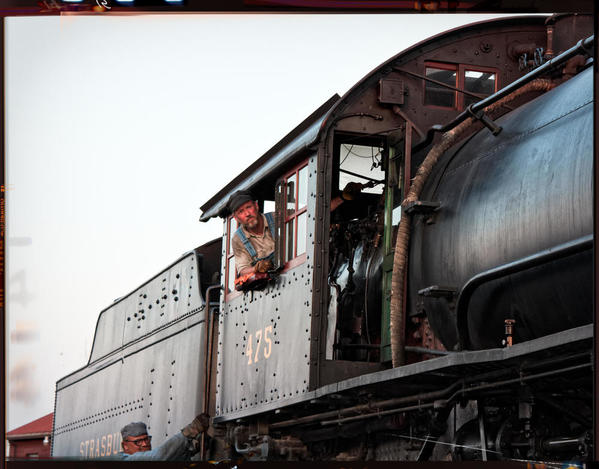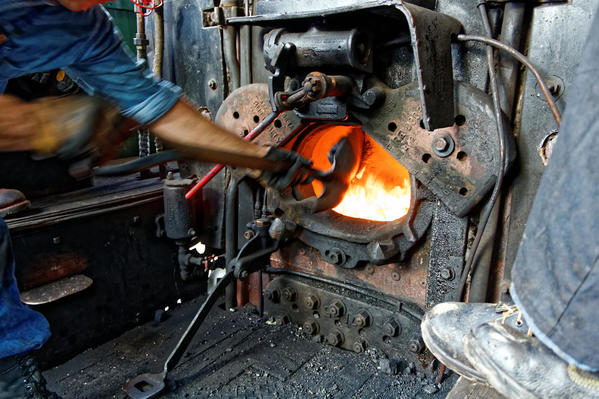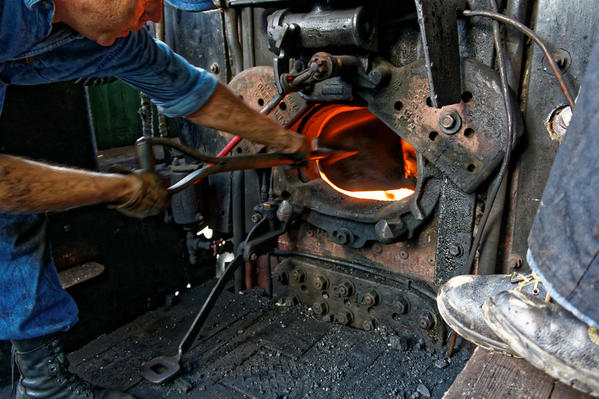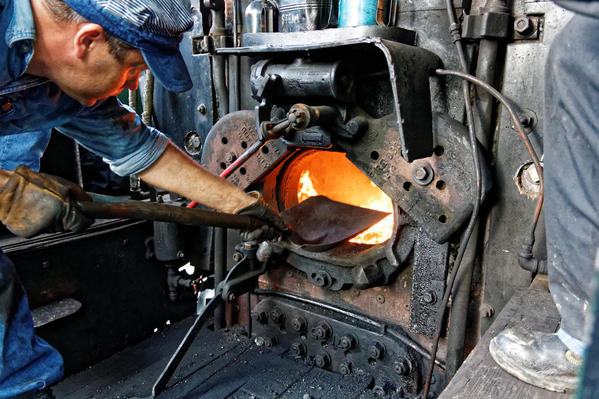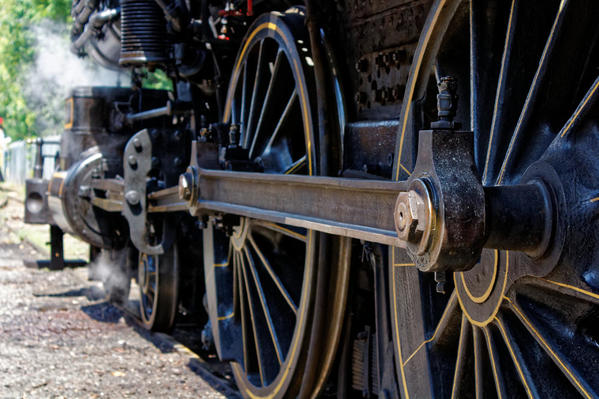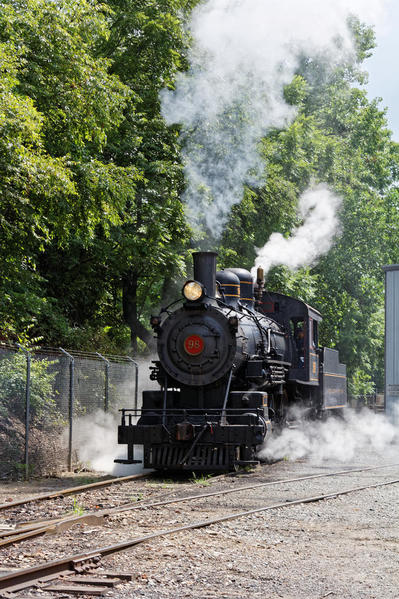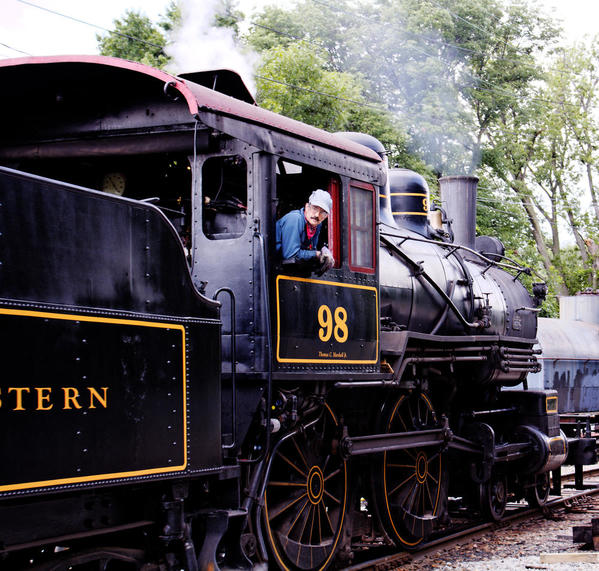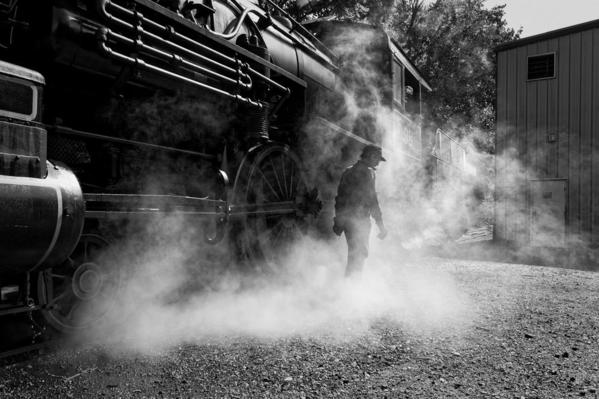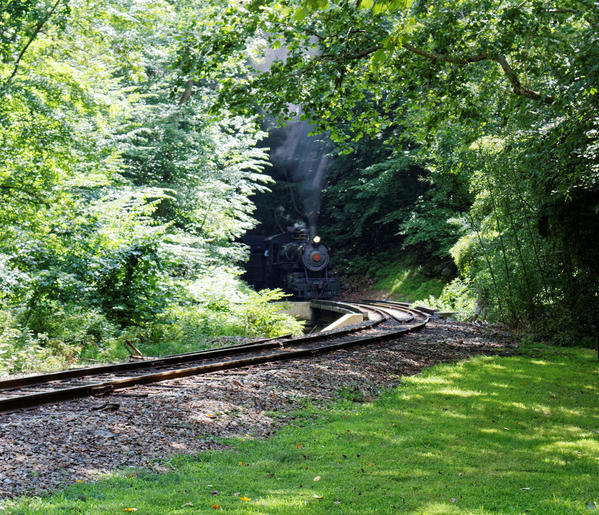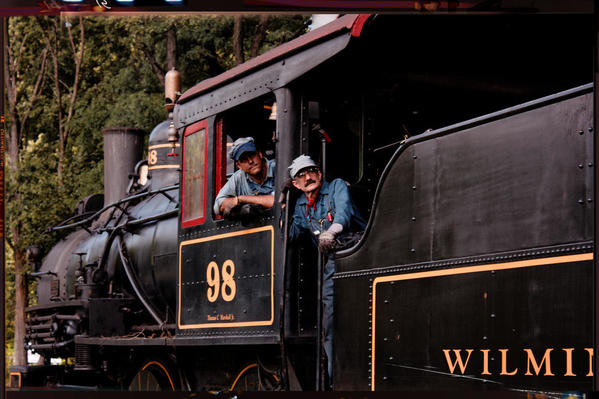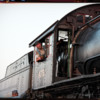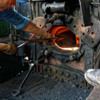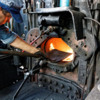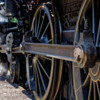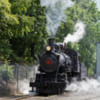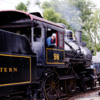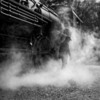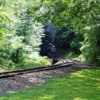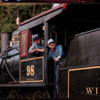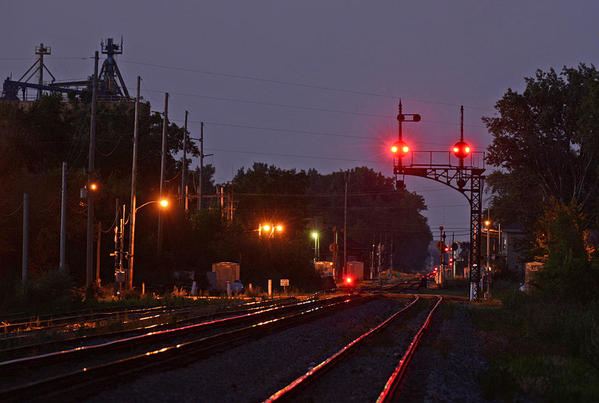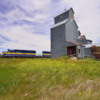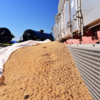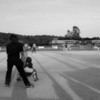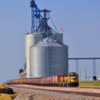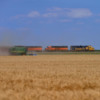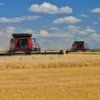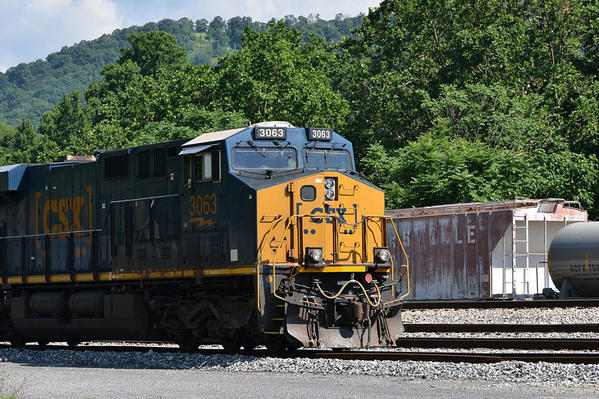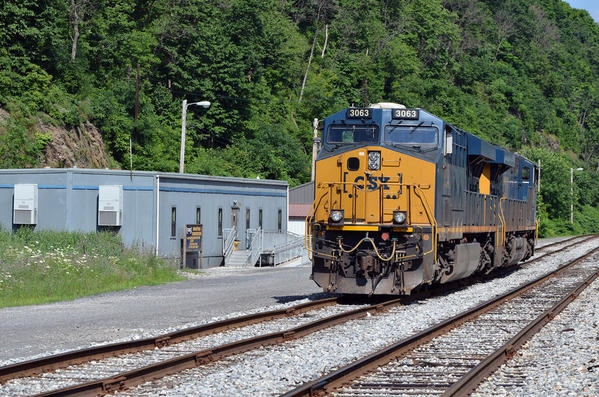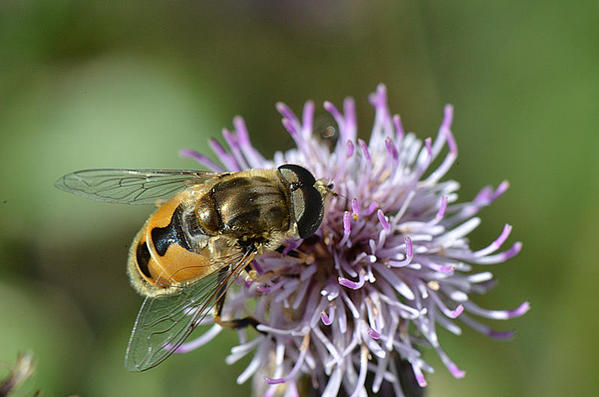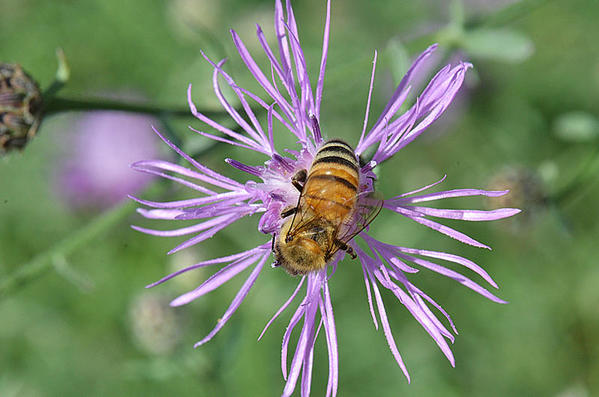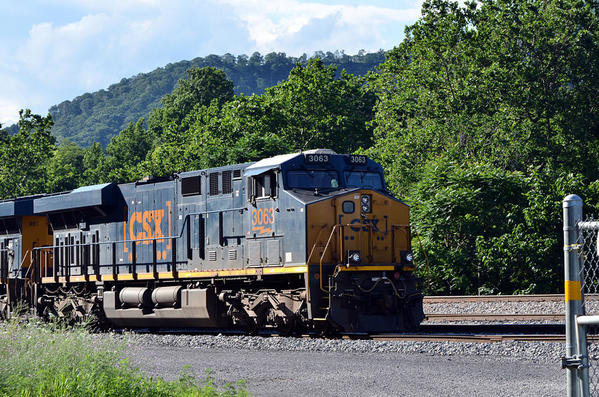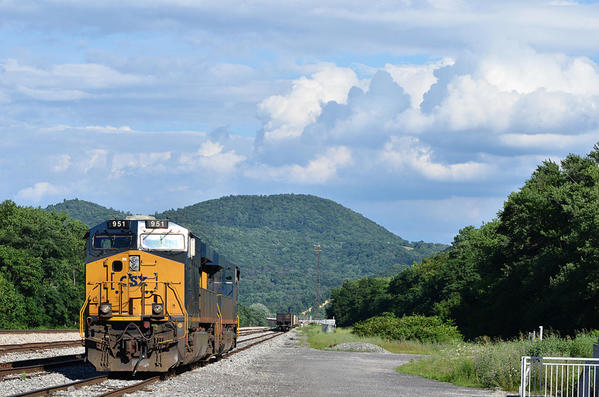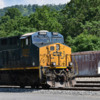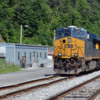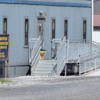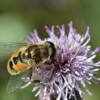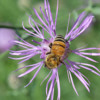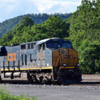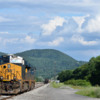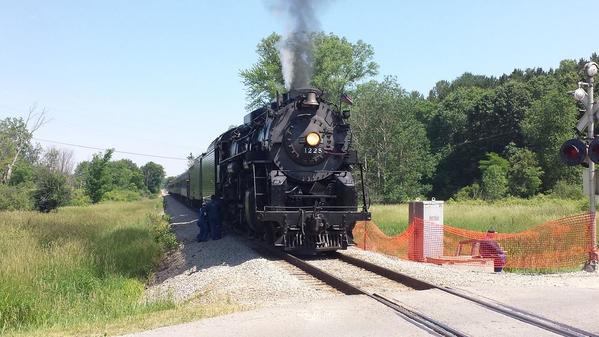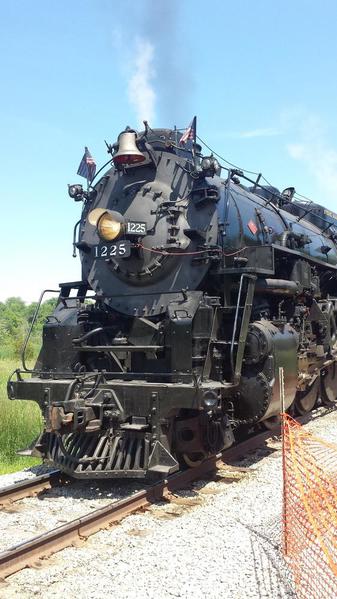Welcome to Midweek Photos, one and all. This week begins with a "tale of three diesels." On July 24, Steamtown National Historic Site planned to use this F3, owned by the Anthracite Railroads Historical Society, to lead the excursion from Scranton, PA to Cresco, PA, a distance of 39 or so miles. Electrical problems sidelined the F, and even though the second unit shown here, C420 no. 405, had enough power to take the train the distance, it could not perform the runaround move in Cresco alone. So another unit was chosen.
Big Alco power, in the form of C636, no 3642 was mated to the C420. 5600 horsepower to carry 4 coaches over the Pocono Mountains.
The 1880s depot is well preserved by the Barrett Township Historical Society. The group also rebuilt the semaphore, crossing gate and the gateman's shanty to bring back a bit of the good old days.
The road no longer crosses the tracks, so the shanty is not "necessary," but it is a cool addition.
This is the interior of the shanty. The stove must have been a bear to attend to... mainly due to it's lowness. The mannequin is not abnormally tall.
After the shuffling of cars, No. 405 takes the lead for the return to Scranton.
All aboard!
Now, I hand you the thread to add any photos you may have collected recently. All pictures of the real world are welcome... so long as a train is part of them. Have a great week. Enjoy your summer.
























